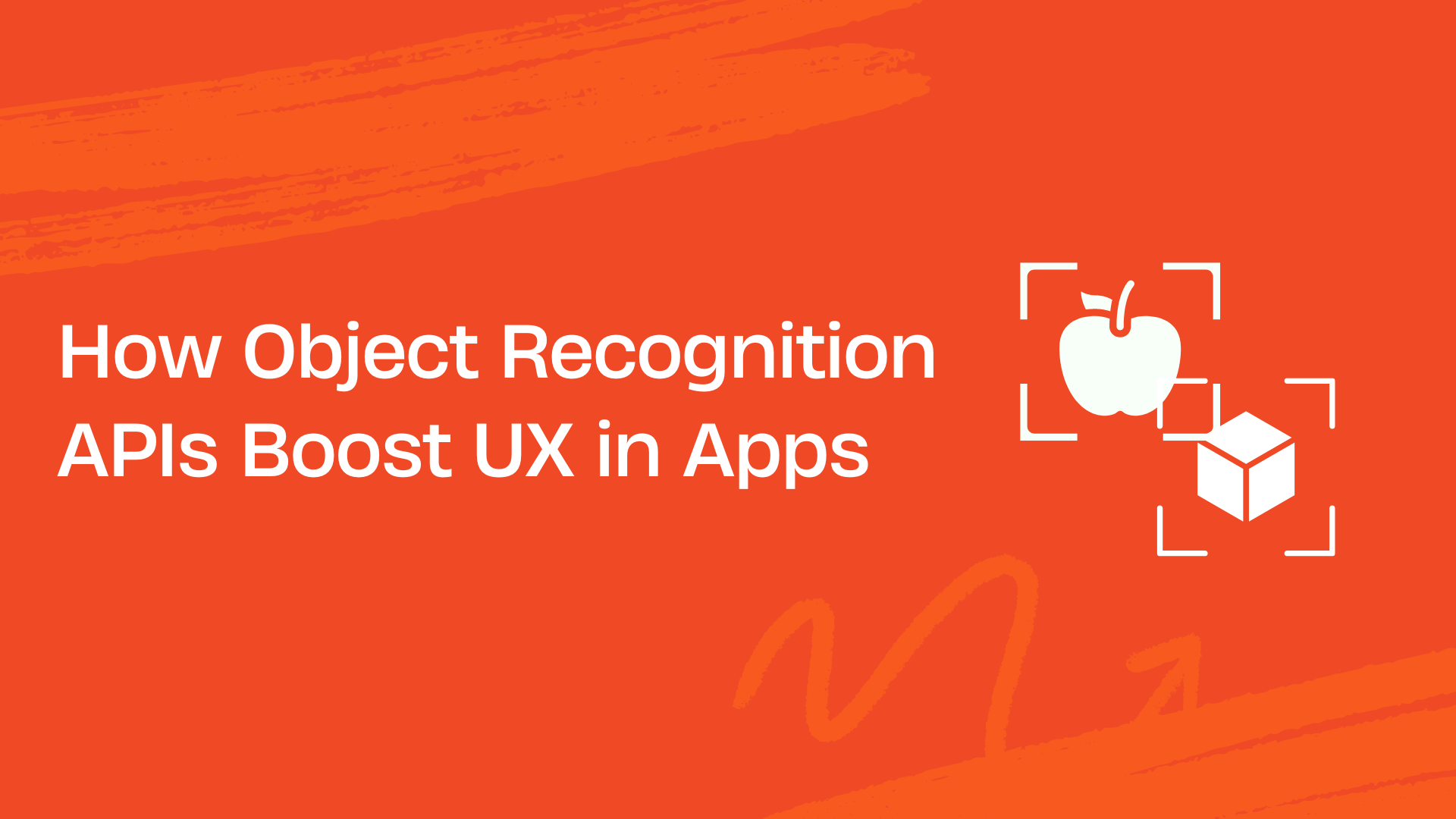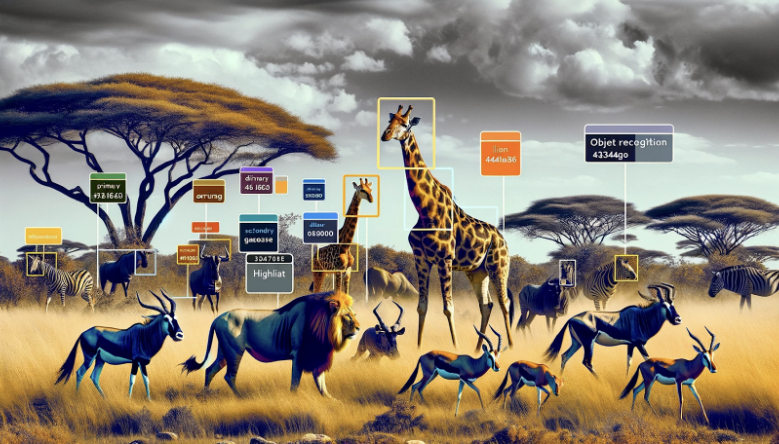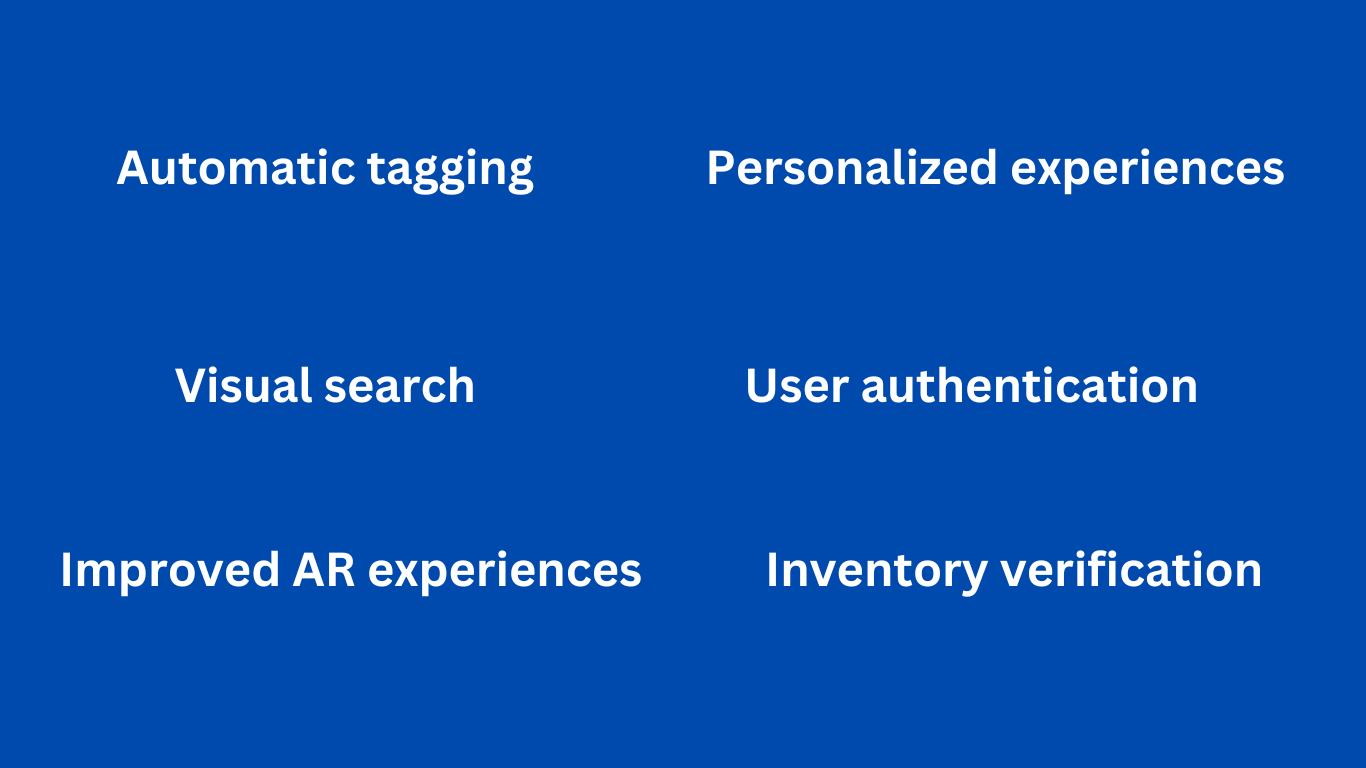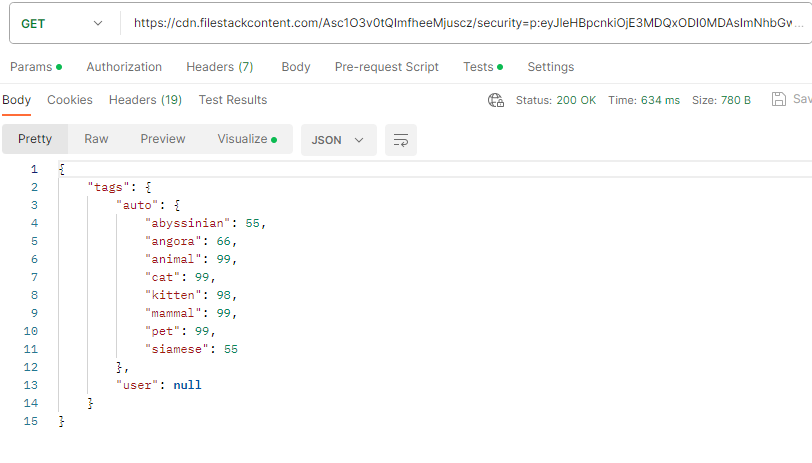In today’s digital world, providing an excellent user experience (UX) in apps is more crucial than ever. Users today have higher expectations and are more demanding when it comes to UX. They want personalized, intuitive, and responsive interactions. Luckily, we have advanced technologies at our disposal that help deliver exceptional user experience. An object recognition API is one such technology.
An object recognition API detects objects within an image automatically. Businesses operating across industries can leverage an API for Image Recognition to transform the user experience.
Take, for example, e-commerce platforms that can enable visual search capabilities through an object detection API. This feature will enable users to conveniently search for their desired products through images, enhancing the shopping experience.
In this article, we’ll cover the basics of object recognition APIs and their role in transforming UX in different types of apps.
What is an object recognition API?
As the name implies, an object recognition API recognizes and detects objects within an image automatically. It is basically an application programming interface that enables developers to integrate advanced object recognition capabilities into their apps.
With an object detection API, an app can automatically classify and locate objects present within an image. The detected objects are displayed in a bounding box along with their names. This enables users to see the location of objects.
The object recognition technology leverages AI, computer vision, and deep learning algorithms to identify/detect objects. For example, an object recognition API can built using a deep learning model trained to identify and locate a specific type of object. This can be vehicles, people, or animals.
There are also object detection/recognition solutions that can identify and extract multiple objects. These solutions are built using custom models trained to detect features/patterns that distinguish one type of object from another.
Types and use cases of object recognition technologies
- Facial recognition: Object recognition is widely used in the facial recognition feature available in many modern smartphones, security systems and social media platforms. It helps identify and tag individuals in photos. Facial recognition uses Convolutional Neural Networks (CNNs). CNNs are a subset of deep neural networks specifically designed for processing structured grid data, such as images.
- Autonomous vehicles: In autonomous vehicles, object recognition helps identify various types of objects to ensure safe navigation. These include pedestrians, traffic signs, other vehicles, and obstacles.
- Image classification: Object recognition also helps with image classification. For example, we can use it in applications where distinguishing between two object classes, such as cat vs. dog, is necessary.
- Traffic management: Object recognition can help identify and classify vehicles on roads to monitor traffic flow and enforce regulations.
Also read: Simplifying auditing with object recognition APIs.
The role of object recognition APIs in enhancing UX
Object recognition plays a crucial role in improving user experience and interactions across various industries. It helps provide more intuitive, personalized, and responsive experiences.
Here are different ways an object recognition API can help boost UX:
Automatic tagging
Object recognition APIs can automate tasks, such as tagging, by recognizing and processing objects in images. For instance, e-commerce platforms can use an object recognition API to automatically tag products and categorize them in images uploaded by users. This simplifies the search and shopping experience.
Similarly, social media platforms can incorporate object recognition to recognize and tag friends in photos uploaded by users automatically. This makes sharing and organizing content effortless for users.
Visual search
Object Recognition APIs enable visual search capabilities in E-commerce platforms. This feature allows users to find their desired products or information by uploading images instead of typing text.
Users can take a picture or upload an image of a product they’re interested in. The API will identify similar items or provide relevant information based on the recognized object.
Personalized experiences
Object recognition can empower systems to understand user preferences based on their behavior. Systems can identify patterns based on the objects users interact with. For example, e-commerce platforms can leverage object recognition API to identify the preferences of customers based on the types of products they interact with.
This allows businesses to deliver a personalized shopping experience. For example, they can show tailored product recommendations and send personalized offers to customers based on their experiences. This significantly enhances the user experience.
User authentication and security
Facial recognition, which is a subset of object recognition, is widely used in smartphones for user verification and authentication. This makes the whole process more convenient and secure, enhancing the user experience.
Security systems can also integrate facial recognition functionality for user authentication.
Improved Augmented Reality (AR) experiences
Object recognition in AR can facilitate a more seamless and realistic interaction between virtual elements and the real world. This helps deliver more immersive user experiences. Users can interact with virtual objects or receive contextual information when pointing their device’s camera at recognized objects or scenes.
Moreover, AR storytelling can greatly benefit from object recognition. It can help deliver more personalized content according to the user’s environment.
Inventory verification
Real-time object detection helps automate the inventory verification process. For instance, with an object recognition API, you can identify and categorize inventory items automatically. This makes it quicker and easier to compare them with the financial records.
Enhanced efficiency of self-driving cars
Autonomous cars rely heavily on AI object recognition software to detect and recognize objects in their surroundings. An object recognition model trained to identify and locate different types of objects can significantly enhance the performance of autonomous vehicles. Thus improving the overall user experience.
Integrating Object Recognition APIs
Choosing an object recognition API
When choosing an object recognition API, considering the following factors can help you choose the right one for your project:
- Assess the API’s accuracy and ease of integration.
- Evaluate whether the API supports the types of objects and categories your project requires.
- Assess the speed and scalability of the API.
- Check if the APIs implement robust security mechanisms. Assess if it complies with relevant security standards and regulations.
Filestack: An example of an easy-to-integrate object detection and recognition API
Filestack is a leading cloud-based file management platform. It provides a wide range of APIs and tools for:
- File uploads
- Quick file delivery
- Transformation
Filestack also offers auto-image tagging, which supports advanced object recognition and detection. These features are available as a part of Filestack intelligence services.
Filestack leverages state-of-the-art neural networks and machine learning models to identify and locate objects in an image with high accuracy. It supports a wide range of categories. These include people, transportation, animals, vehicles, and more.
Moreover, Filestack also has an image sentiment detection feature. It can accurately identify emotions in an image. These can include happiness, anger, sadness, fear, confusion, and more. This feature is available as a part of Filestack Processing API.
With Filestack, you can also utilize the explicit content detection feature to ensure you only show content that complies with your company’s rules and boundaries.
Integrating an object recognition API: Step-by-step guide
Here, we’ll show you how to integrate Filestack object recognition API:
First, create your Filestack account to get your free Filestack API key. We’ll now implement the Filestack file upload functionality to upload images on which you want to perform object detection.
Here’s how you can integrate the Filestack file uploader:
Include the Filestack JavaScript SDK UMD module in your code:
<script src="//static.filestackapi.com/filestack-js/3.x.x/filestack.min.js"></script>You can now configure the client with your API Key and open the default File Picker:
const client = filestack.init(YOUR_API_KEY);
client.picker().open();For object recognition, you need to generate “Security Policy” and “Signature.” These parameters are implemented for security purposes. You can generate Policy and Signature through the “Policy and Signature” tab in your Filestack dashboard.
You can then use the following URL in your code for auto-image tagging and object recognition:
https://cdn.filestackcontent.com/security=p:<POLICY>,s:<SIGNATURE>/tags/<HANDLE>Testing Filestack image tagging
We’ll perform auto-image tagging and recognition on the following image:
1) We’ll test the functionality on Postman. To do so, create a new HTTP request in Postman.
2) Enter the following URL in Postman’s GET method
https://cdn.filestackcontent.com/<FILESTACK_API_KEY>/security=p:<POLICY>,s:<SIGNATURE>/tags/<EXTERNAL_URL> 3) Generate “Policy & Signature” through your Filestack dashboard. Add an expiration date and check the following boxes:
4) Copy and paste the Policty and Signature in Postman. Also, remember to add your actual API key:
Here is the response to our image tagging/object recognition request:
Challenges and solutions
- Ensuring high accuracy and reliability in object recognition is crucial but challenging. However, using a reliable object recognition API known for high accuracy can help solve this issue.
- Scaling the object recognition system to handle a large number of requests can be difficult. Using a scalable API like Filestack can help you process thousands of requests without compromising performance.
- Handling sensitive images and data while ensuring user privacy and data security is also a huge challenge. Choose an API that implements robust security mechanisms. For example, Filestack supports HTTPS encryption and end-to-end encryption and employs robust authentication mechanisms.
Future of object recognition in UX
Future object recognition algorithms are expected to be more accurate and capable of understanding context and relationships between objects. They will also be optimized for even faster real-time object recognition.
Moreover, object recognition will be increasingly integrated with other AI technologies. These include natural language processing (NLP) and voice recognition.
Conclusion
Object recognition means detecting and locating objects within an image automatically. An object recognition API makes it easier to integrate this functionality into web apps, as developers don’t have to train deep learning models from scratch.
Integrating an object or image recognition API, such as Filestack, in apps can significantly enhance the UX. For example, it helps enable visual search capabilities in e-commerce platforms. It also improves the performance of autonomous vehicles.
Sign up now and integrate Filestack object recognition capabilities in your apps.
FAQs
What are Object Recognition APIs, and how do they enhance user experience?
Object Recognition or object detection APIs allow applications to identify and classify objects within images or videos. They enhance the user experience by enabling more interactive and personalized features.
Can Object Recognition APIs be integrated into any application?
Yes, these APIs are versatile and can be integrated into various applications, though integration ease and performance will depend on the API provider and application specifics.
What should I consider when choosing an Object Recognition API?
Key considerations should include the API’s:
- Accuracy
- Processing speed
- Ease of integration
- Support for different object categories
- Cost
- Documentation quality
- Customer support availability
- Compliance with privacy and data security regulations.
Sidra is an experienced technical writer with a solid understanding of web development, APIs, AI, IoT, and related technologies. She is always eager to learn new skills and technologies.
Read More →







